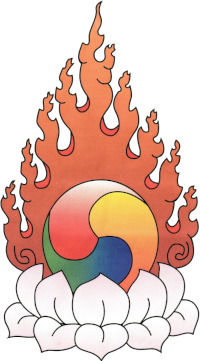The Three Principles of the Path
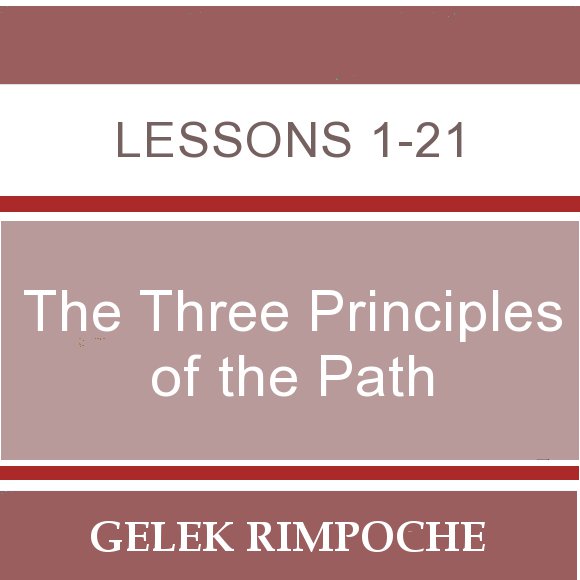
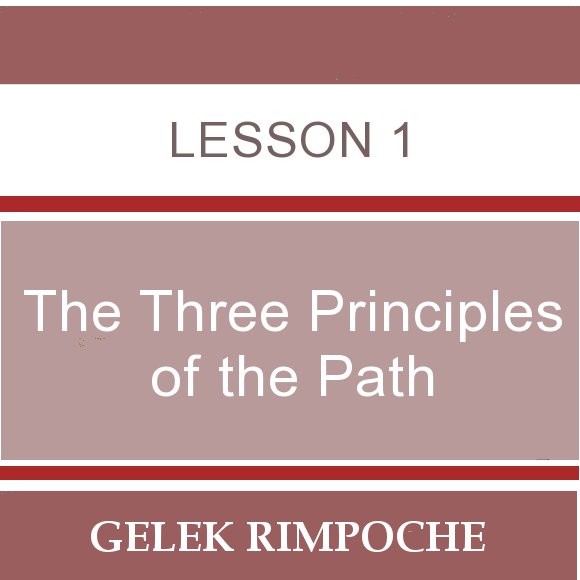
The Three Principles of the Path – Lesson 1
Lesson Number 1 of 21
The Three Principles of the Path have led many practitioners forward in their practice of the dharma. What are these three principles, and from whom do they come to us? In this lesson, Gelek Rimpoche informs us of the rich lineage of this practice, from the venerable Je Tsong Khapa through Rimpoche’s own masters. He briefly outlines the Three Principles as introduction, and exhorts us all to “work smarter, not harder” by following these principles in our dharma practice.
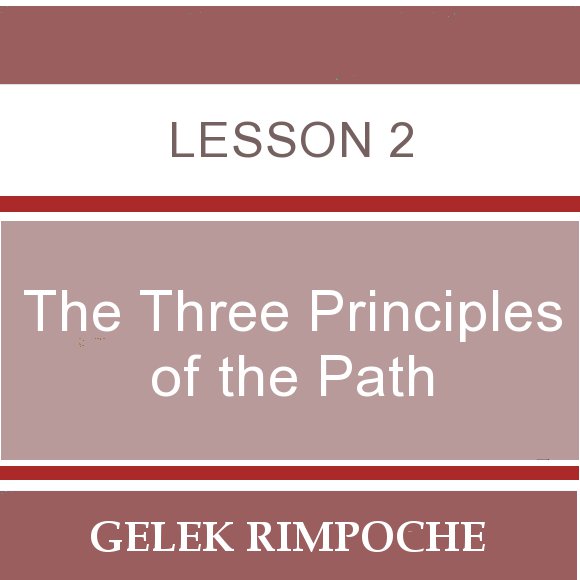
The Three Principles of the Path – Lesson 2
Lesson Number 2 of 21
Within the concept of reincarnation, the effects of our actions do not end at our death. So what is the best practice to ensure that our negative emotions don’t haunt us in future lives? In this lesson, Gelek Rimpoche tells us that motivation is the key factor to create real dharma practice, practice that actually makes a difference. We must continually check our motivation, ensuring that finding enlightenment for the benefit of all beings is our guiding purpose throughout our time spent listening, learning, and living our lives. This will cause our every action to be real dharma practice.
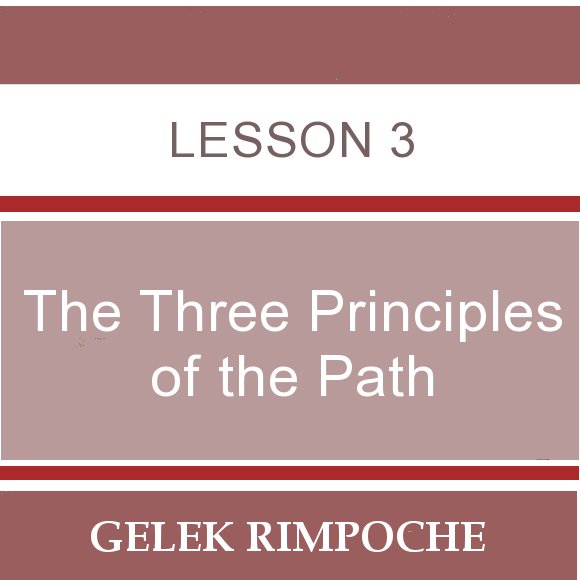
The Three Principles of the Path – Lesson 3
Lesson Number 3 of 21
According to tradition, the true light on the journey to Buddhahood is the Lam Rim, the graduated stages of the path. And the very essence of the Lam Rim is the Three Principles. What qualities must a student of this tradition possess, and what activities should they engage in, to make the best use of this precious human life and these Three Principles? In this lesson, Gelek Rimpoche uses the analogy of the three cups to illustrate the three faults of listening to the golden teachings of the Buddha, and gives instruction on how we can overcome these faults in order to benefit ourselves and others most effectively.
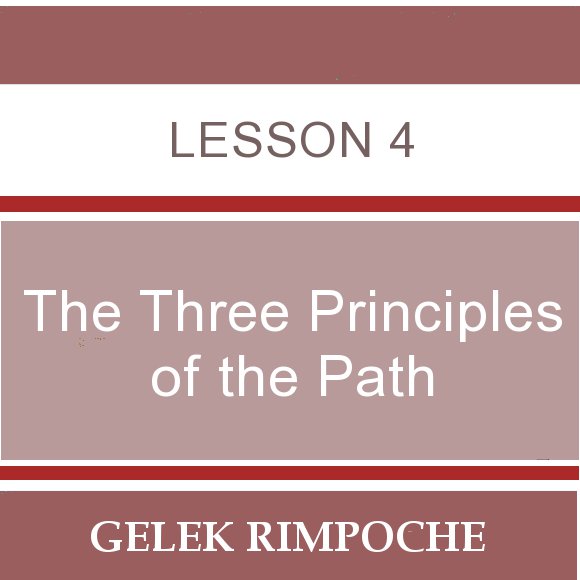
The Three Principles of the Path – Lesson 4
Lesson Number 4 of 21
What is meant by the term ‘dharma’, and how can we make certain that our good works will lead us out of samsara, the cycle of existence? In this lesson, Gelek Rimpoche explains that without renunciation of “worldly dharmas” such as comfort and fame, all our good deeds will only serve to hold us more firmly within that cycle of existence. We will be like a boats man without an oar, ‘karma without dharma’. We must see the faults of samsara and benefits of nirvana in order for any of our efforts to help us achieve nirvana.
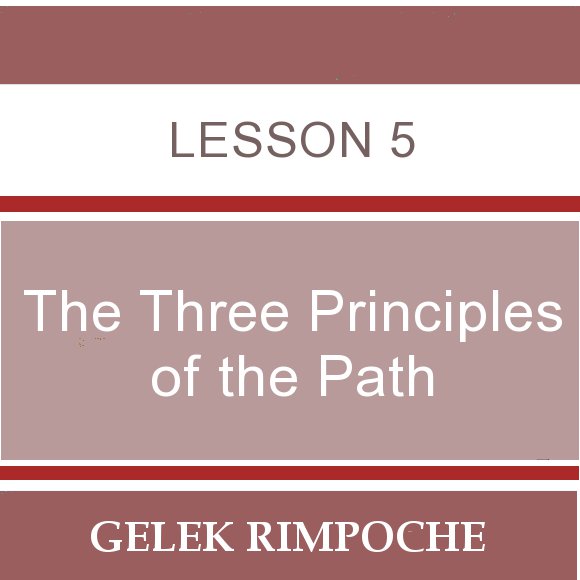
The Three Principles of the Path – Lesson 5
Lesson Number 5 of 21
Once convinced of the necessity to renounce the worldly dharmas, how does one take the first step toward developing along the stages of the path? In this lesson, Gelek Rimpoche illustrates the importance of devotion to a spiritual guide through the story of Je Tsong Khapa and his relationship to Manjushri, the Buddha of Wisdom.
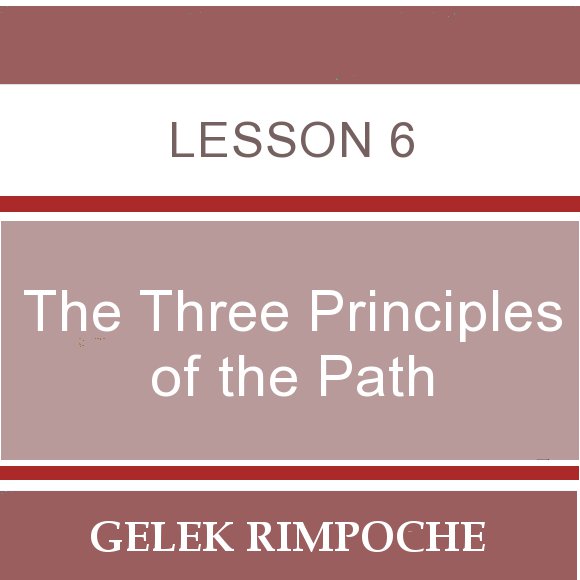
The Three Principles of the Path – Lesson 6
Lesson Number 6 of 21
On the spiritual path, it is important to have a healthy relationship with a spiritual mentor. But what defines a healthy relationship? In this lesson, Gelek Rimpoche differentiates between proper guru devotion, which is based on appreciation, and attachment, which is a ‘personalization’ of the relationship. This is true of everything: if you appreciate, and leave it alone, then it becomes pure love. Rimpoche goes on to explain the necessary qualities of the guru, in particular possessing the three higher trainings of morality, concentration and wisdom.
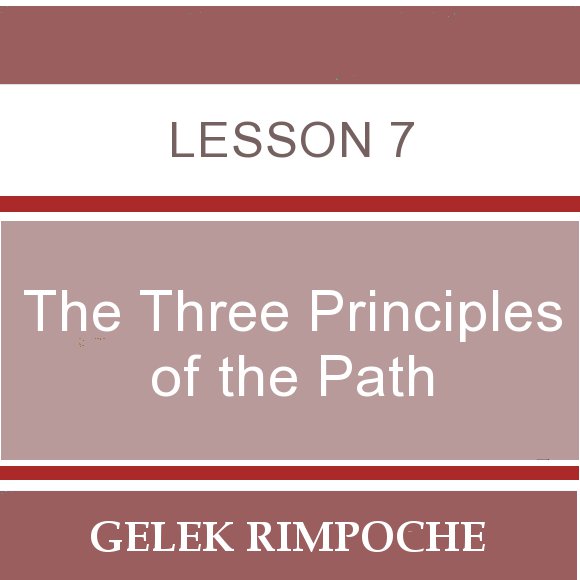
The Three Principles of the Path – Lesson 7
Lesson Number 7 of 21
Je Tsong Khapa’s Three Principles of the Path are said to contain the ‘cream of the Buddha’s teachings.’ In this lesson, Gelek Rimpoche explains that the Three Principles, as explained by Je Tsong Khapa in his letter, are the real essence of Buddha’s teachings: renunciation, as the gateway to freedom, compassion as the gateway to the Mahayana Path, and wisdom, which is necessary in order to achieve liberation.
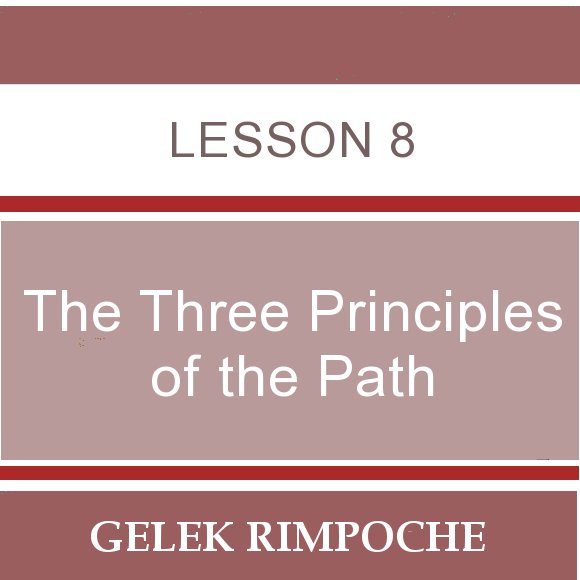
The Three Principles of the Path – Lesson 8
Lesson Number 8 of 21
Attachment, says Gelek Rimpoche, is the “Crazy Glue” that keeps us stuck and suffocating in the cycle of existence, and pervasive suffering is the biggest problem there. It follows us in death, bardo and rebirth and never gives us harmony, peace and joy. It is the renunciation of that suffering which leads us to strive for liberation.
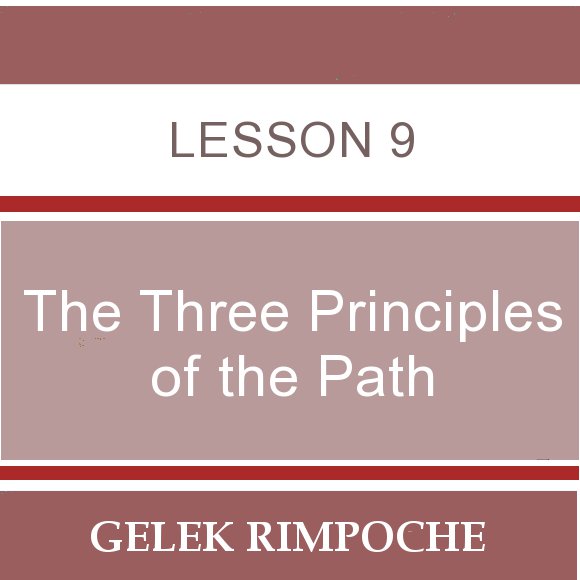
The Three Principles of the Path – Lesson 9
Lesson Number 9 of 21
So much of our lives are wasted, and then suddenly, we are faced with our own deaths. Is there a remedy for our common situation? In this lesson, Gelek Rimpoche, through a question and answer period, helps us understand how our addiction to ‘samsara’s delights’ leads us away from the fulfillment of the mission of our lives. At the time of death, our habit of clinging to worldly dharmas will influence what happens in our next life. Realizing how rare and yet, how precious our life is, we must be lead to develop renunciation, in order to change this life and our future lives.
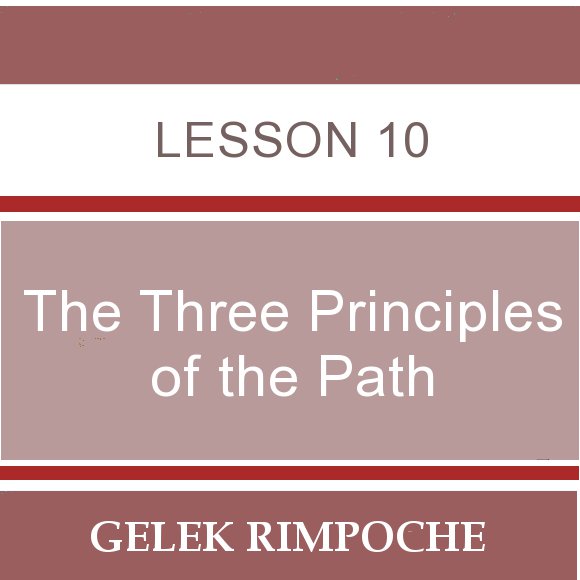
The Three Principles of the Path – Lesson 10
Lesson Number 10 of 21
Having an interest in obtaining enlightenment, what qualities must a student have in order to properly listen to these teachings on the Three Principles of the Path? In this lesson, Gelek Rimpoche explains the most beneficial mindset with which to take these precious teachings. The first and most important aspect of this is to be fully aware of all the faults of samsara, and having developed strong distaste for it, to not for a minute be fooled by ‘samsaric delights’, and thereby avoid the snare of being pulled back into cyclic existence. One must see oneself as a patient with a chronic disease, and develop the desire to by cured.
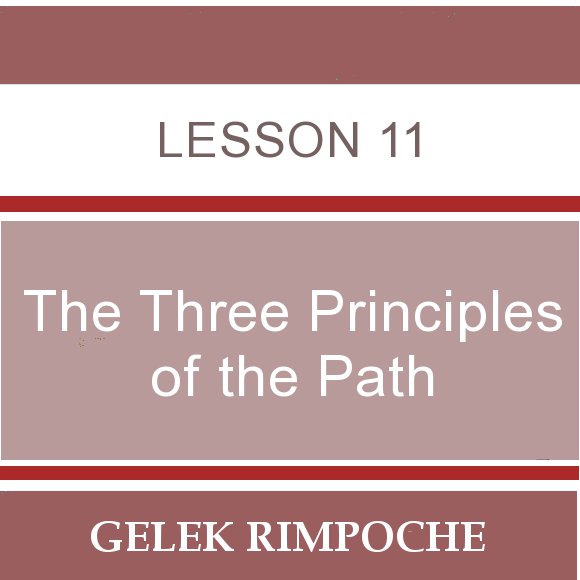
The Three Principles of the Path – Lesson 11
Lesson Number 11 of 21
What is renunciation? In this lesson, Gelek Rimpoche describes renunciation as compassion for oneself. Through self-compassion we desire to cut our physical addictions which we know are harmful. Likewise, through renunciation of samsara we will make every attempt to cut our attachment to the ‘samsaric delights’ that pull us back into the vicious cycle of grasping at identity again and again. It is only though truly understanding how to help ourselves that we will be able to help others.
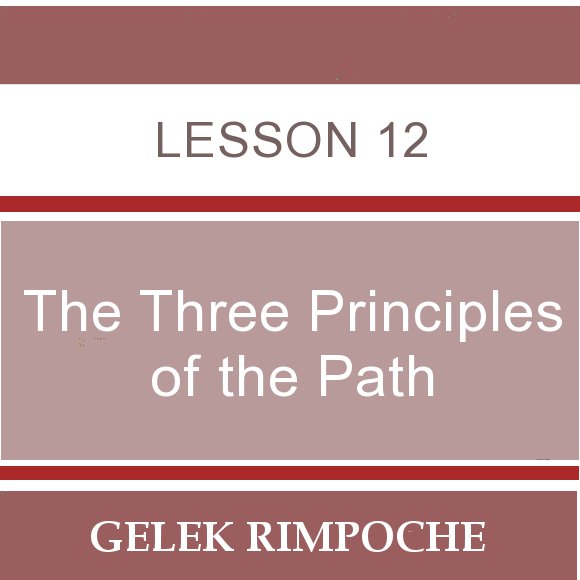
The Three Principles of the Path – Lesson 12
Lesson Number 12 of 21
Understanding the preciousness, rarity and impermanence of our human life is key to developing renunciation. In this lesson, Gelek Rimpoche helps us to see that the real mission of our lives is not to be pulled one way and another by worldly concerns, but rather to follow a proven and reliable path in order to make best use of our lives. Rimpoche exhorts us to consider what the sum total of our lives will be at the time of death, and then to begin working toward the result we desire. By overcoming laziness, we begin to make progress toward a rich and meaningful life.
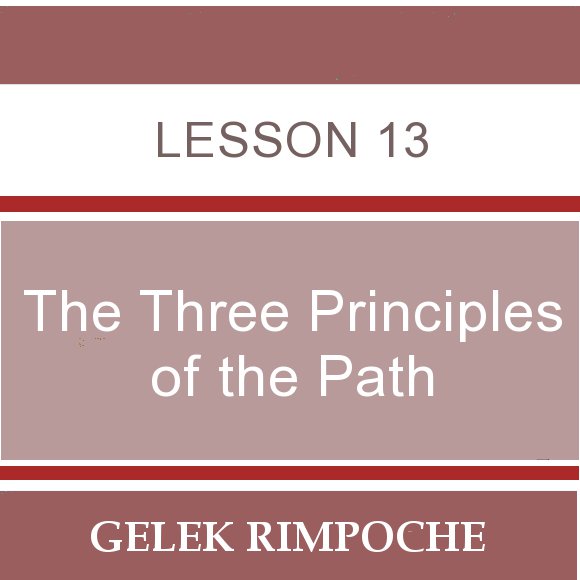
The Three Principles of the Path – Lesson 13
Lesson Number 13 of 21
Renunciation has been defined by some as “Letting the interest in this life go.” But what does that entail? In this lesson, Gelek Rimpoche tells us that the biggest problem we face is attachment to this life’s interest, such as comfort and success. He reminds us that the ‘things’ in our life are impermanent, and as such can be lost. However, true happiness and joy is very much within the grasp of all beings. Listen to discover what Rimpoche calls “one of the best gifts of the Buddha.”
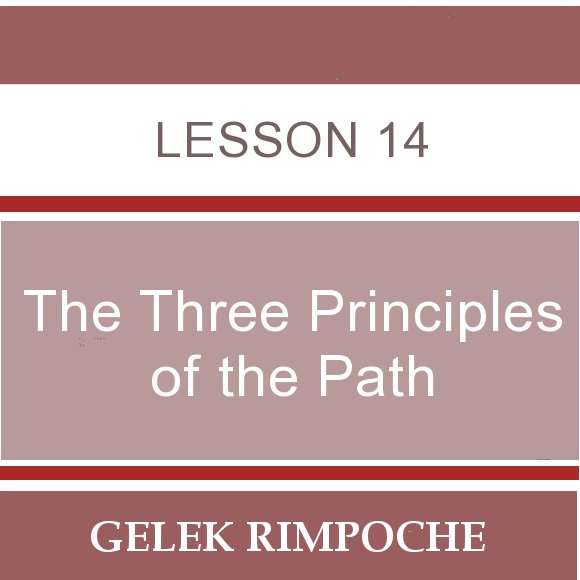
The Three Principles of the Path – Lesson 14
Lesson Number 14 of 21
Being caught up in the negative emotions generated by attachment to this life’s cares can be like being caught in a circular game. In this lesson, Gelek Rimpoche details how we get caught up in this play of likes and dislikes, grasping and aversion. It is the eight worldly dharmas, such as seeking pleasure and avoiding pain, seeking praise and avoiding blame, that are the emotional forces that keep us chasing our own tail. And as we play this game, our precious human life is running out. Exiting this game is a choice that is in our own hands.
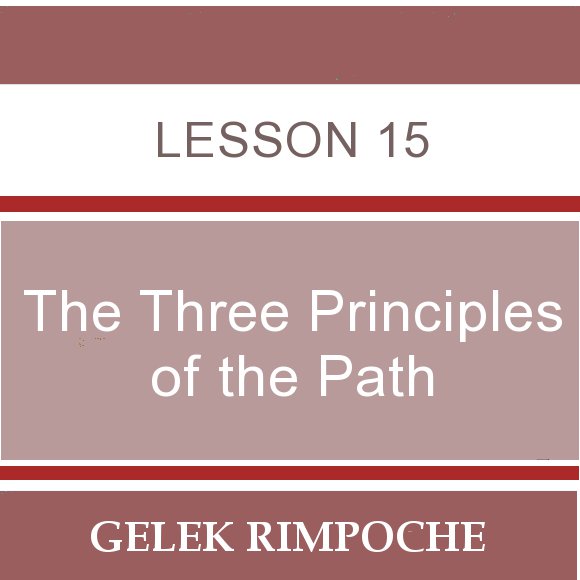
The Three Principles of the Path – Lesson 15
Lesson Number 15 of 21
As we begin to organize our lives around the motivation of seeking liberation, how do make the right choices? In this lesson, Gelek Rimpoche teaches us that we must take advantage of life’s essential activities at all times, making the right choices and setting the right priorities daily. Worldly activities are as chaff, and we must sort out and find the real, true purpose of our lives in order not to waste this precious gift.
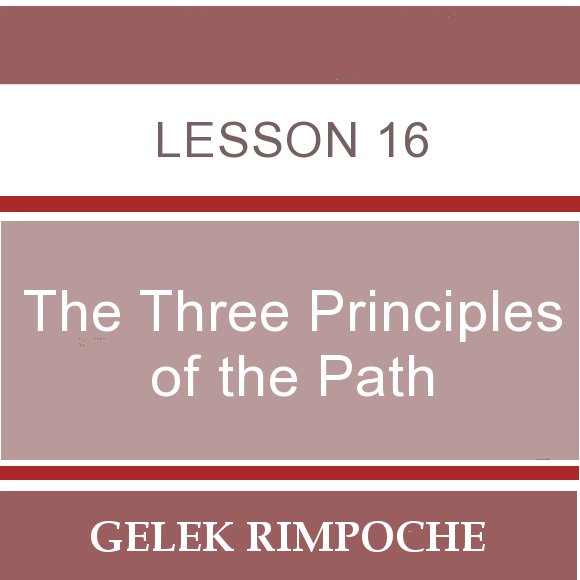
The Three Principles of the Path – Lesson 16
Lesson Number 16 of 21
Obtaining enlightenment for the benefit of all beings should be the mission of our lives. But do we not also have to take care of our own liberation and work to improve our current and future lives? In this lesson, Gelek Rimpoche explains how the influence of bodhimind on our renunciation makes it possible for us to attain all the wonderful delights of this and future lives, while at the same time creating the cause to become a totally enlightened Buddha.
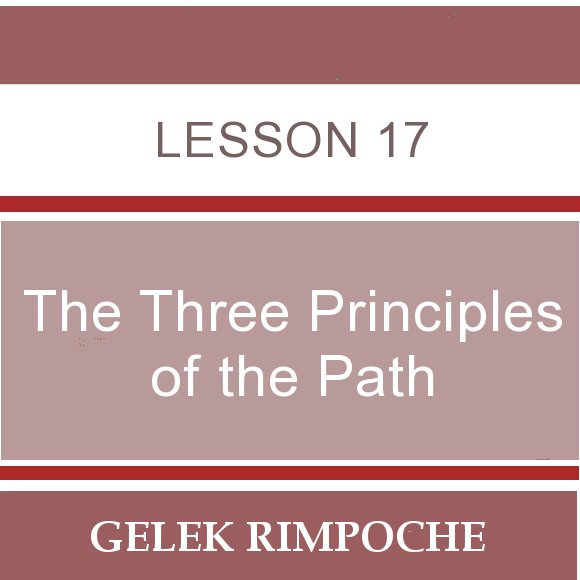
The Three Principles of the Path – Lesson 17
Lesson Number 17 of 21
With compassion we witness the suffering of others. But do we really understand the depth of that suffering, and our own connection with this suffering? In this lesson, Gelek Rimpoche leads us on a stirring guided meditation, exploring the depth and breadth of the suffering of all beings. Rimpoche helps us to understand that although at this moment we may be close to some and distant from others, this can change in a moment. Therefore we must develop equanimity toward all before true compassion can be found.
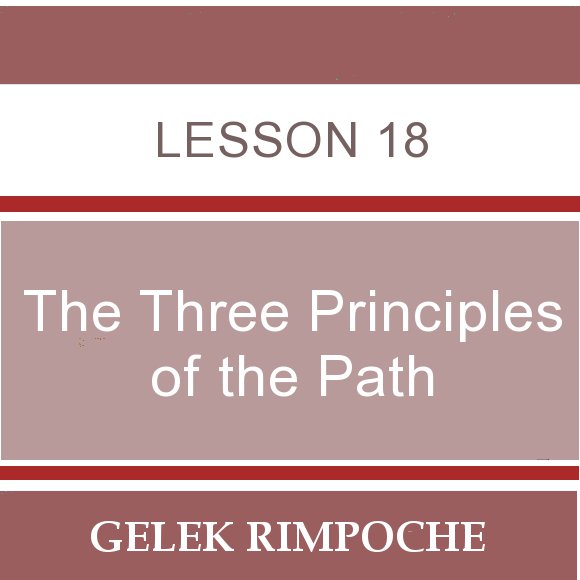
The Three Principles of the Path – Lesson 18
Lesson Number 18 of 21
Having seen the suffering of ourselves and others, we continue our meditative path toward the development of bodhimind. In this lesson, Gelek Rimpoche leads us through the stages of development of the sincere wish to help all beings, including ourselves. That wishing bodhimind cannot come about without a compassion that is based on true love, a feeling of closeness to others, such as a mother’s love for her only child.
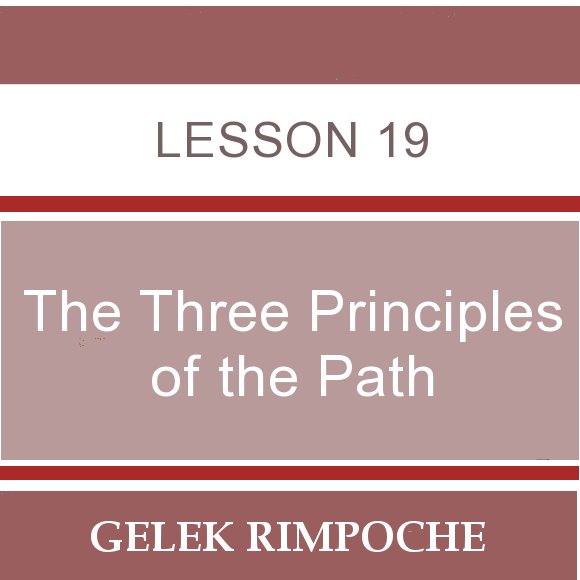
The Three Principles of the Path – Lesson 19
Lesson Number 19 of 21
Having developed the desire to leave samsara, and having expanded love and compassion to all beings, we now must take the action to cut the root of samsara. In this lesson, Gelek Rimpoche introduces us to the wisdom that is the direct opponent of ignorance, the root cause of samsaric existence. This wisdom is the direct experience of the emptiness of inherent existence. The search for the true understanding of emptiness may begin with the question “Who am I?”
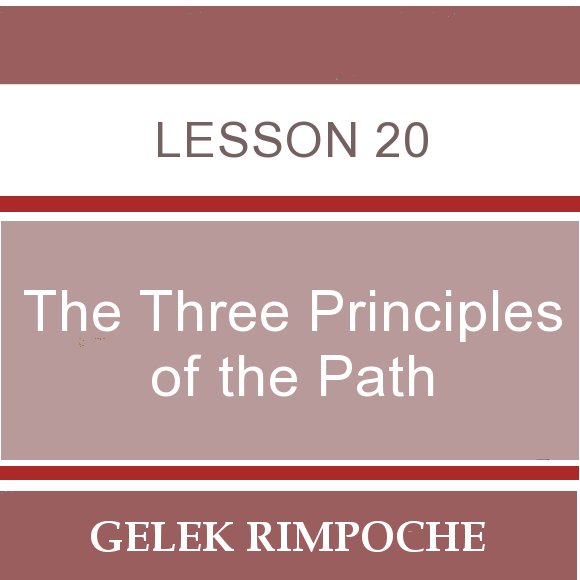
The Three Principles of the Path – Lesson 20
Lesson Number 20 of 21
How does one answer the question, “Who am I?” In this lesson, Gelek Rimpoche leads us to an understanding of the empty nature of all phenomena. To be who we are, we must depend on a physical form, consciousness, and a label, or name. Having those three aspects, only then can we say, “I am here.”
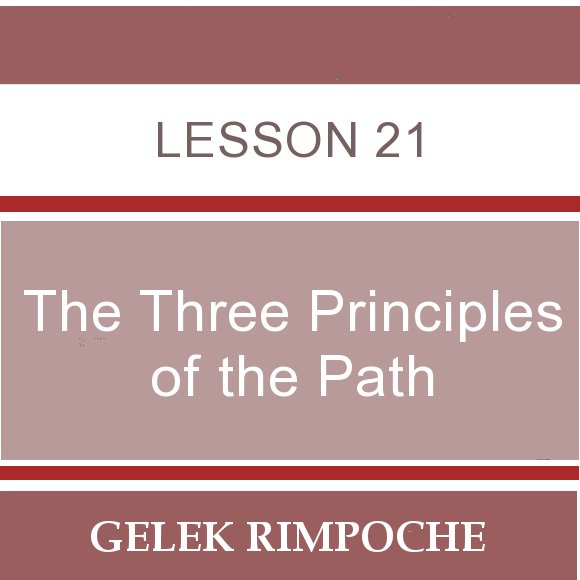
The Three Principles of the Path – Lesson 21
Lesson Number 21 of 21
How can one know when the wisdom of the Buddha has been developed in oneself? In this lesson, Gelek Rimpoche tells us if one is able to perceive the appearance and emptiness of phenomena simultaneously, one has understood the true intention of the Buddha. Further, Rimpoche tells us that appearance eliminates existence, and emptiness eliminates nonexistence. Once this is understood, one can never be defeated by the extreme views of eternalism and nihilism.

